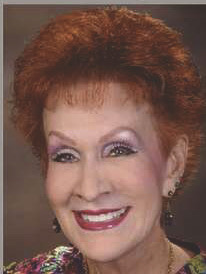The origins of Hallowe’en lie in the ancient Celtic festival Samhain (pronounced sow’win): a celebration focused on the spirits of the dead. The festival was traditionally held on the official start of winter on the Celtic calendar, November 1 on our calendar. The wintry darkness of November symbolized death to the Celts.
During Samhain, revelers would light bonfires to keep evil spirits away. It was believed the border between life and death softened at midnight on October 31, allowing wandering spirits to “come back” to destroy crops and cause mischief.
The Celts wore animal-themed costumes as they sacrificed crops and animals by throwing them into the raging bonfires, hoping to summon the protection of deities. This is identical to pagan Ba’al worship of the Canaanites in the Old Testament.
In the 8th century, Pope Gregory III designated November 1 All Saints Day to remember saints and martyrs. This celebration included a few Samhain customs. All Hallows’ Eve—the night before All Saints Day—became Hallowe’en. Trickor- treating had some of its origins in All Souls Day parades in England, where the poor would beg attendees for food and threaten mischief if food was withheld.
Hallow means sanctify or make holy. However, even as Christian missionaries tried to make All Saints Day the focus of celebration, the ghoulish paganism of Samhain remained, and the observance of All Hallows Eve as a celebration of the disembodied dead prevailed. Gifts of food and drink were placed outside the door to appease wandering spirits. This began the tradition of children dressing up as spooks and ghouls and going door to door to collect treats. In the mid 1800s, Irish immigrants brought their version of Hallowe’en to North America, where it was celebrated with public costume parades and parties.
Spending on Halloween has increased from $8,000,000,000 (yes, that is billion!) in 2012 to $9,100,000,000 (billion) in 2017. More than $480,000,000 (million) was spent on costumes for animals. $2,700,000,000 (billion) purchased candy that became a Halloween staple in the late 1950s, when candy companies began marketing sweets as the perfect Hallowe’en treat. Going door-to-door on Hallowe’en began in the late 1930s. By the 1940s, dressing up as monsters and ringing doorbells became a nationwide affair.
Candy makers had already been using holidays as a way to increase candy sales—they produced the heart-shaped chocolate box in the early 1900s to market Valentine’s candy. Since candy is cheaper than fruit and kids love it, candy became the obvious choice for people to hand out to trickor- treaters Many object to Hallowe’en celebrations because of its ghoulish, pagan roots, and for Christians, there are certainly more beneficial events to commemorate, but I think we’re missing three subtle, but extremely powerful, dangers of Hallowe’en:
This over-indulgence of sugar that lasts far longer than one night of the year, makes Americans, young and old, prone to diabetes, tooth decay, obesity, ADHD and cancer. Sugar is highly addictive and should be eaten, especially by children, very sparingly at any time.
With so much lack and hunger in our world, God must grieve over this egregious waste of the resources He has provided. Imagine the life-giving provision the billions dollars would buy!
We dishonor God—Who is life—when we celebrate, rather than abolish, our last enemy. ( 1 Cor. 5:26): “The last enemy to be subdued and abolished is death.”
If believers don’t refuse Hallowe’en because of its questionable foundations, we should prayerfully reconsider how we honor God, treat our bodies, and allocate the resources God has placed in our hands.
In. nite Grace Ministries teaches spiritual and emotional maturity to individuals and families torn by the addictions and relational death resulting from a wrong focus in a sin-broken world. Call 580-774-2884 for more information about this life changing ministry today!



